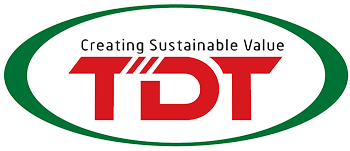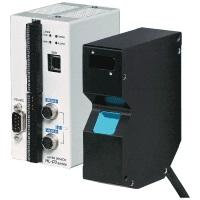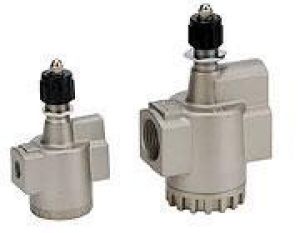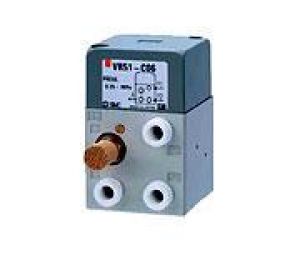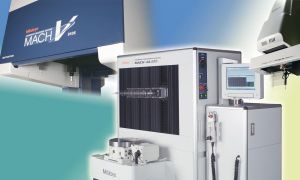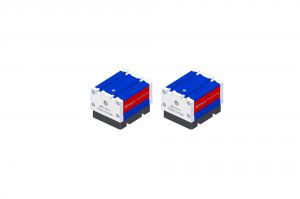HỖ TRỢ TRỰC TUYẾN
Product name: High Speed, Multi-Point Laser Displacement Sensor HL-D3
Category: Sensors
![]() CONTACTS: 0934.361.799
CONTACTS: 0934.361.799
Details
High Speed Multi-point Sensing and Stable Appearance Measurement in One Device
|
 |
 |
 |
CE , Korean KC , FDA Approved
CE : EMC Directive
FDA : HL-D301B, HL-D301C only
Features
|
Four Modes for Different Measurement Requirements
The HL-D3 series is equipped with four sensing modes to cater to a variety of measurement needs, including in-line high-speed sensing and off-line high-precision detection.
Multi-select displacement sensing mode [MSDS]
The displacement sensor senses up to 10 measurement points specified on the X axis (measurement range of width) and completes the judgment at super-high speed.
>>Click here
Whole synchronized measurement mode
The displacement sensor performs sensing of all target objects with the same sensitivity adjustment throughout the entire measurement range of width (X axis). This mode is suitable for the sensing of fast-moving objects.
Multi-zone beam control measurement mode [MZBC]
High-precision sensing is achieved by segmenting the measurement range of width (X axis) to optimize light intensity. This mode is suitable for the sensing of objects with varied glossiness or color.
>>Click here
Constant pitch measurement mode
Sensing is performed at even intervals upon adjusting the sensitivity per the pitch specified along the measurement range of width (X axis). High-speed sensing is made possible by the reduced number of sensing points.
 |
HL-D3 adopts parallel beam made possible by the latest optical system. The reduced area of shadow that appears when light is emitted on the target object made it possible to accurately sense the shape of the object. |
Multiple Shape Calculation Functions and Two Judgment Outputs
The HL-D3 series calculates the shapes, including the height difference, width, and cross-sectional area, from the shape waveform based on the received light. At the same time, the displacement sensor uses these calculation results to instantaneously make Hi / Go / Lo judgments based on the present upper and lower limits.
(Only height calculation and step calculation in multi-select displacement sensing mode)
Thanks to the two sets of output, different shape calculations can be performed for each output or two sensor heads can be connected and used to output each judgment results.
 |
Shape calculation is performed using the representative values extracted from the set calculation area based on the specified conditions. This technique has the benefit of tolerating any shifts in the position of objects being sensed as long as they are within the calculation area. |
 |
Height calculation |
 |
Width calculation |
 |
Step calculation |
 |
Cross-sectional area calculation |
Settings & Monitoring Software (HL-D3SMI) Provided as Standard
Conditions and the monitoring of measurements and judgment results can easily be set up by connecting to the HL-D3C controller and a PC pre-installed with HL-D3SMI using USB cables. The shape waveform based on the saved data can be reproduced on screen, which allows for it to be used as an analytical tool.
|
|
■ Operating environment
| OS | Microsoft Windows® 7 Professional 32 bit / 64 bit Microsoft Windows® 8.1 Pro 32 bit / 64 bit Microsoft Windows® 10 Pro 32 bit / 64 bit (Japanese, English, Chinese) |
|---|---|
| CPU | 1 GHz or more |
| Memory | 2 GB or higher |
| Screen display | SXGA (1280 × 1024 full colors) or more |
| Hard disc | 50 MB or more of available memory |
| USB interface | USB 2.0 Full Speed (USB 1.1 compatible) compliant |
| * | A CD-ROM drive is required for installation. |
|---|---|
| * | Windows 7, 8.1 and 10 are trademarks or registered trademarks of Microsoft Corporation in the United States and other countries. |
HL-D3SMI (monitoring software) can. [PART 1]
- Easily identify the sensed point based on the display of the displacement shape waveform obtained from the light intensity waveform
- Display the calculation area along with the displacement shape waveform in order to enable an instant understanding of the calculated point and area
- Display the calculated values of height difference, width, and cross-sectional area on the screen
- List the displacement value of each sensing point when operating in MSDS mode
|
|
|
HL-D3SMI (monitoring software) can. [PART2]
- Store displacement shape waveform data, calculated measured values, and judgment results on the memory built into the controller during continuous sensing.
- Provides a stereoscopic representation of the shape by a 3D display of stored data.
- Replay the stored data on the buffering screen at a later time, provided that the stored data is saved in the dedicated file format.
- Allow waveform display and analysis by means of spreadsheet software based on the data saved in CSV file format.
|
What is multi-select displacement sensing? [MSDS]
Conventional 2D displacement sensors produced the measurements of the specified points after sensing the entire measurement range of width (X axis), which made them unsuitable for high-speed sensing.
The HL-D3 series performs efficient internal processing by sensing only the displacements at the specified points. This feature enables super-fast measurement, from sensing to calculation and judgment. Sensitivity is also adjusted at each point to ensure optimized sensing in order to also achieve high precision.
(MSDS: Multi-Select Displacement Sensing)
[Features]
- High-speed sampling
→ Max. speed 80 μs (for 2-point specified) - Sensing points can be specified as desired
→ Up to 10 points - Measurements of specified points can be buffered
- Height, step calculation, and judgment results can be output
- Wide-cell function
|
[Wide-cell function] |
 |
What is multi-zone beam control? [MZBC]
Conventional 2D displacement sensors uniformly use the same light intensity adjustment for the entirety of the measurement range of width (X axis). When parts with significantly differing reflectance exist, the received light intensity becomes saturated or insufficient, preventing the acquisition of effective measurement results.
The HL-D3 series breaks down the measurement range of width (X axis) into small segments and adjusts the emission for each segmented unit (called "light intensity adjustment unit") for optimal sensitivity in order to achieve stable, high-precision sensing.
(MZBC: Multi-Zone Beam Control)
[Features]
- Stable sensing is possible even with objects of which reflectance is not consistent throughout the whole object
→ Both metal and resin parts exist
→ Profile consists of flat and sloped parts - High-precision sensing
→ Resolution of 1 μm 0.039 mil (average number of samples: 64 with average height measurement) - Calculation and judgment results of width, step, and cross-sectional area can be output
HL-D3 series version upgrade
The following five functions have been added to models produced in and after September 2013:
■Automatic following function for the measurement area
■Increased OUT calculations
■Mask function
■I/O terminal switching function
■Specular reflection installation supported
